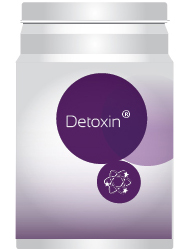DETOXICATION


Recall on detoxication physiology and mechanism
An essential function of regulation of the substances naturally produced by the organism, and essential to the organism in its mechanisms of basal metabolism is the function of detoxication.
This function intervenes through enzymes implied in waste disposal and maintenance of metabolic balance. The liver, the kidneys, the intestine, the lungs and the skin are functionally the key organs of this detoxication.
Detoxication function is vital in all regeneration processes. It helps to maintain all organs and functions free of toxins, toxics that have to be eliminated. Dysfunction can be at the origin of intoxination, tireness, metabolic disorders.
Reinforcing detoxciation function may help come out of intoxications of all types, drugs, tabacco ,heavy feeling of tireness and pre-metabolic symptomes.
Opened studies have been runned on post anaesthetic disorders and metabolic symptomes, demonstrating importance of detoxication and efficacy of detoxication micronutrigenomic answer.
Dysfunction
Which are the risks of a dysfunction of this emunctory system?
Deceleration of the intestinal transit time with dyspeptic troubles, aerocolia, constipation…
Dysabsorption of fats if the liver, the gall bladder, and the pancreas show a dysfunction (at the level of excretion of biliary salts, metabolism of cholesterol and triglycerides, enzymatic systems: pancreatic lipase…)
Deficit of elimination by the liver of useless or even toxic substances for the organism (dysfunction of the glucuronic acid “detoxication” system)
Disturbance of kidney excretion activity, in particular of substances resulting from the nitrogen metabolism (e.g. urea) with the production of low quantity urines, dark, of marked odor
Disturbance at the level of the respiratory apparatus in its functions of filter, of excretion in particular through the bronchial mucous membrane of substances aero-contaminating or the infectious, toxic agents… thus promoting infectious incidents, over-sensitiveness, hyper-reactivity…
At the skin level, unbalance of hypodermis lipid metabolism and of vitamin D synthesis by the skin, disturbances of the exchange functions between the external and internal medium (leak of water, disturbance of skin transpiration, of skin absorption and of the role of filter to external agents, loss of the immunizing protection of the Langerhans cells)
The deterioration or the blocking of this function of detoxication will gradually resound on the whole set of other functions with corollaries such as: fat overload of adipocytes, weight increase, venous circulatory insufficiency, loss of physical tonicity, lowering in “psychic output” with difficulties of concentration, of vigilance…
ANI detoxication strategy
The concept of detoxication of post-anaesthesia and metabolic symptoms is lived very differently by each one, when these symptoms are sources of a large number of consultations.
ANI have developed and conceived an efficient nutritional therapy for reducing the whole set of observed symptoms within a very short time frame.
Micronutrition Detoxication regulates the detoxication function. Its effectiveness is found in:
1. Toxin eliminations: standardization of the functional signs at the level of:
Liver: regulation of gamma GT (Standards: <30UI/L); its increase is found in metabolic disorders (diabetes, hyperlipidemia), hepato-biliary diseases, alcoholic disease…
Kidney: standardization of the clearness of the dark urines (reflection of renal excretion activity at the level of the nitrogen metabolism: urea)
Intestine: regulation of the transit
Skin: change of odor of perspiration – improvement of the complexion
2. Regulation of metabolisms: at a stage of mild to moderate disturbances with standardization of metabolisms:
– Lipids: CT (<2,20G/L) – LDL (<1,30G/L) – TG (<1,50g/L)
– Sugars: glycemia (<1,10g/L)
– Nucleic acids: uric acid (<0,70mg/L)
